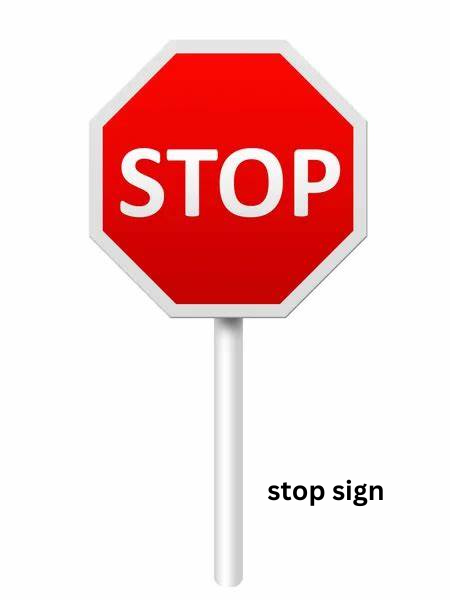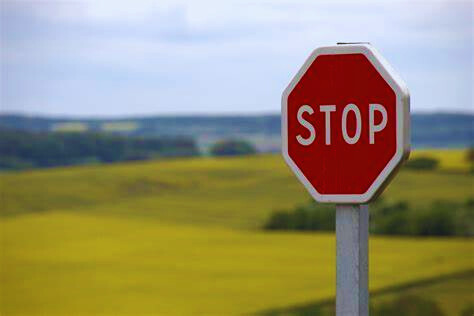A stop sign is a type of traffic sign used to alert drivers to the need to stop completely and ensure that all cars and pedestrians have left the intersection (or railroad crossing) before proceeding beyond the sign.[1] The word STOP is shown in white or yellow on a red octagon in various nations. The text may be in English, the local language, or both. An other variant is also permitted under the Vienna Convention on Road Signs and Signals, which consists of a black or dark blue STOP, a red circle with a red inverted triangle on either a white or yellow backdrop.

Things To Keep in Mind:
One of the most often used signs in use today is the stop sign. It is octagonal in shape and has red lettering on a white backdrop; for better visibility, it can also be yellow with black letters. Depending on their placement and intended use, stop signs come in a wide variety of designs. On them, there might also be other symbols or text like “Yield,” “No Parking,” or “School Zone.” In certain locations, the sign’s wording may be replaced with flashing lights that indicate when another vehicle has been picked up by nearby radar, alerting you to apply the brakes. Some states even mandate that every new school bus include this feature.
The stop sign has been in use for more than a century and is virtually always present in areas where vehicles and people coexist. Its straightforward goal is to warn onlookers to slow down and get ready for what’s about to happen (a crosswalk, junction, or driveway). You won’t miss this yellow octagon with its black text when you’re strolling around your neighborhood or driving by at a high pace because it shines out against any background.
Even if you have never really noticed them previously, you can find them at bustling metropolitan junctions and residential streets alike! Although the majority of people are aware of the meaning behind these signals, many are unaware of their origins or the reason behind their current appearance! Let’s examine this more closely.
- Among the most crucial and important traffic signs on the road is this one.
- The US version of this sign, like most others, has the word “STOP” printed in white on a red background.
- Some drivers just crawl forward at less than five miles per hour at stop signs rather than stopping completely. This is not permitted; it is referred to as a “rolling stop” in most places. According to state law, you must stop completely.
- Failure to stop completely at a stop sign may result in a citation.
Stop signs found all across the world:
The most widely used stop sign in the world is the red octagonal field with the white English-language stop legend; however, not all countries use this design; for instance, Japan uses an inverted solid red triangle, while Zimbabwe had a disc with a black cross until 2016. In addition, there are other variations of the octagonal red-and-white sign.
While the word “stop” is used on stop signs in all English-speaking nations as well as many other nations, in certain jurisdictions a comparable word in their native tongue is used instead, or additionally. Furthermore, the English word “stop” has been borrowed by a number of languages throughout the years, including French, so it is no longer seen as a foreign term. Native languages are frequently used by Americans reservations, particularly those supporting language revitalization initiatives,[citation needed] and Israel employs a hand icon in the palm-forward “stop” motion instead of a word.
Frequently asked questions concerning stop signs:
What shape does a stop sign have?
Most stop signs across the world have an octagonal shape.
Does a stop sign serve as a warning?
The “YIELD” sign, the “DO NOT ENTER” sign, the “WRONG WAY” sign, and the “STOP” sign are examples of regulatory signs. The Manual on Uniform Traffic Control Devices (MUTCD) states that other regulatory signs are typically rectangular with a black legend and border on a white background of regulatory signs.
What hue does a stop sign have?
For almost 60 years now, it has been the norm (since 1954). The octagonal “STOP” traffic sign had black lettering on a yellow background prior to that.
for more information visit our Homepage


